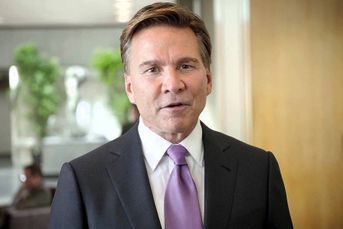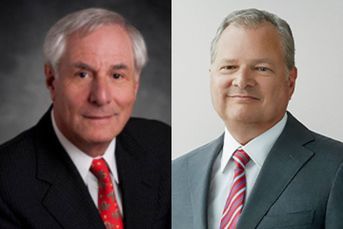Independent broker-dealers suffer worst year since credit crisis

Coming off a gloomy 2015 of weak revenue growth, the forecast for this year is for more of the same.
For the independent broker-dealer industry, 2015 was the worst year in the last six, and 2016 promises to be just as difficult — if not more so.
“If 2015 was bad, 2016 is worse,” said Joel Marks, the former chairman of independent broker-dealers First Allied and The Legend Group. “I think it’s going to be a challenging year.”
The independent broker-dealer industry suffered its worst year since the credit crisis, with the top 25 firms collectively reporting $21.03 billion in revenue, an annual increase of just 3.2%, according to the latest InvestmentNews survey.
By that measure, it was the weakest year for the industry since 2009. That’s when the S&P 500 fell to a low of 683.4 before rebounding. The top 25 firms recorded a meager 2.6% year-over-year growth in revenue that year.
In recent years, the top 25 independent broker-dealers have typically reported double-digit revenue growth, with 2012 being the sole outlier, when they reported single-digit revenue growth.
In 2015, the next tier of broker-dealers struggled even more. Independent broker-dealers ranked 26 through 50 in the annual InvestmentNews survey reported a decline in revenue of 1.2%.
There were several culprits to blame for the independent broker-dealer industry’s very bad year.
The stock market, which at times in 2015 seemed panicked, unnerved investors. The S&P 500, including dividends, rose by just 1.4%. Anticipation of the Labor Department’s fiduciary rule soaked up resources at already-strapped firms, as the industry sought to prepare for a fundamental change in how the securities industry is regulated. And the decline in sales of high-commission products, such as nontraded REITs and variable annuities, added to the industry’s top-line pressure.
COMMISSION REVENUE
Of all the negative factors, the decline in commission revenue did the most damage. The top 25 firms reported $9.85 billion in commission revenue last year, compared with $10 billion in 2014, a drop of 1.6%. A stunning 33 of the top 50 firms reported some decline in commission revenue.
Nontraded REITs, which are sold almost exclusively through independent broker-dealers, posted sales of $10 billion in 2015, a year-over-year decline of close to one-third, according to figures from investment bank Robert A. Stanger & Co. Inc.
The impact of the nose dive in nontraded REIT sales can be seen in another way. The top-performing broker-dealer in the top 50, Raymond James Financial Services Inc., reported $1.73 billion in revenue last year, an increase of 10.7%. The company’s president, Scott Curtis, pointed to its decision not to sell nontraded REITs as one of the reasons last year was a strong one relative to other firms. Among the reasons Raymond James does not sell REITs: illiquidity, lack of transparency in pricing and high upfront commissions, Mr. Curtis said.
“In the past, we didn’t get any lift that some of the other firms did in respect to the commissions generated,” he said. “In prior years our growth was close to the average because our competitors got that lift from products we didn’t sell. Last year, our assets were up, and our fee revenue was up.”
VARIABLE ANNUITIES
Meanwhile, net sales flows for variable annuities, another key product sold by independent broker-dealers, were $127.7 billion last year, according to fund tracker Morningstar Inc. That was a decline of 6% from 2014 and a drop of almost 17% from the recent high for variable annuities sales in 2011, according to Morningstar’s data.
An 8.7% increase in fee revenue offset the loss of commission dollars. The top 25 firms reported $8.3 billion in fee revenue in 2015, compared with $7.7 billion in 2014.
Earlier this month, the Labor Department released its streamlined final version of a regulation that will raise investment advice standards for retirement accounts. The specter of the DOL’s fiduciary regulation for retirement accounts hung over the independent broker-dealer industry throughout 2015, tamping down business, executives said.
“The biggest challenge in 2015 was having regulation as an over-arching concern,” said John Rooney, managing principal at Commonwealth Financial Network. “There was a state of paralysis as the date of the DOL’s release drew nigh. Broker-dealers were facing big questions. How will I reconfigure my business? What will the operational costs be?”
“A lot of these firms have made a lot of cuts, but they can’t be run any leaner,” said Mr. Marks, a veteran of independent broker-dealer mergers and acquisitions who is currently contemplating whether to re-enter the business.
“It’s going to be another tough year for the independent broker-dealer marketplace, but that’s not a surprise to anyone,” said Dennis Gallant, president of industry consultant GDC Research. As evidence that firms will face downward pressure on advisory fees, he pointed to LPL Financial’s March decision to cut prices on some of its model wealth portfolios in advance of DOL’s new fiduciary regulation.
‘FEE PRESSURE’
“We’ve been talking about fee pressure for two decades and now it’s here,” Mr. Gallant said. “Dealing with the regulators, the DOL and digital or robo-advice means that advisers won’t suffer, but the home office will. Firms will have to adjust to lower fees and the need for more infrastructure. That will be a challenge to some IBDs.”
Broker-dealer executives and industry recruiters were sanguine, as always, about opportunities in the market, despite the current hurdles of major new regulation for retirement accounts and shrinking sales of high-commission products. Larger firms that have confronted the DOL rule have an opportunity to recruit advisers from firms that have ignored it, they said.
And insurance companies, which have been leaving the high-risk, low-margin independent broker-dealer industry since the credit crisis, are likely to continue their exit. That means more advisers could be in play and looking for new broker-dealers over the next two to three years.
“The growth in the IBD space over the next couple of years will come from the cannibalization of the weaker firms by the big firms,” said Larry Papike, president of Cross-Search, a recruiting firm.
“The positive is that strong firms are able to recruit and retain advisers,” said Larry Roth, CEO of Cetera Financial Group. “The overall environment is not particularly friendly, but big firms will be able to adjust from an operations standpoint.”
“For consolidation, the DOL is the big hammer,” said Eric Schwartz, chairman and CEO of Cambridge Investment Research Inc.
“I still believe that there will be five to 10 large firms left eventually controlling this space,” Mr. Schwartz said. “The DOL and pricing pressure downwards on fees will accelerate that. Any firm that does over $500 million in annual revenues has a chance at being a survivor.”
Learn more about reprints and licensing for this article.








